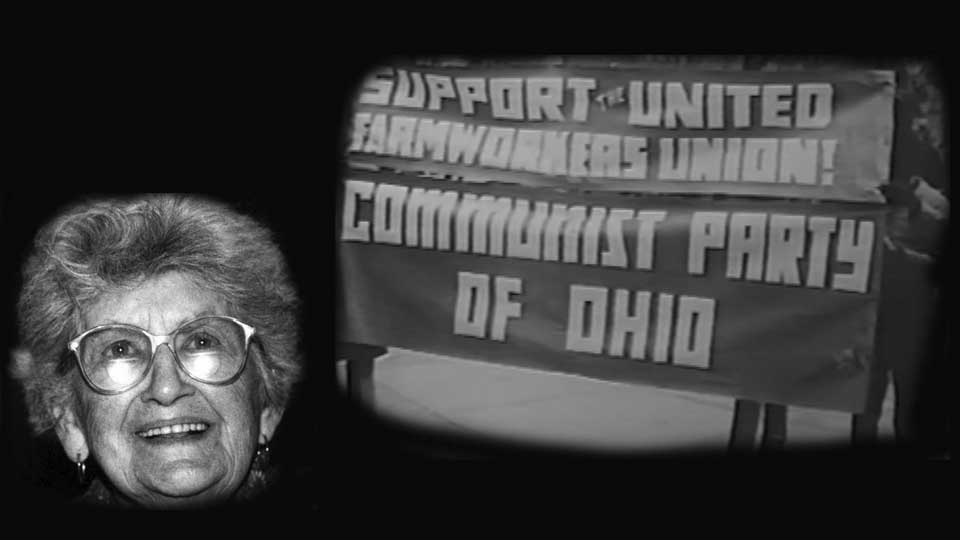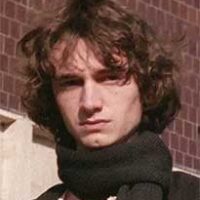
COLUMBUS, Ohio—Where the Columbus Convention Center’s concrete parking garage now sits, there once stood an old home that hosted a modest bookstore stocked with liberal titles and publications, including selections from the National Association for the Study of Negro Life and History.
The establishment was run by the homeowners: the radical organizer and activist, Anna Hass Morgan, and her husband, Richard Morgan, a prominent Anthropology professor at Ohio State.
Decades ago, the two lost everything after Anna was called before the Ohio Un-American Activities Commission for her labor organizing, civil rights activism, and electoral work.
To Columbus
Anna Hass Morgan was a fierce, relentless woman who carried herself with an air of fearlessness. When she was protesting against Nazis marching through Chicago, police told her she was blocking traffic even though she stood safely on the sidewalk.
“I put my arms around a tree, and I said I wouldn’t move and I wasn’t blocking the traffic because the tree had been there longer than I had, and they hadn’t moved the tree,” she said in an interview. Two police had to pry her from the tree and drag her away from the street. This was the first event revealed in her 800-page FBI file.
Morgan was born in 1894 in Providence, R.I., and spent much of her life on the move. Radicalized by Eugene Debs’ visit to the state, she attended Brown University for two years before moving to Cuba for four years with her then-husband, Rubio, in the late 1910s.
She then returned to Rhode Island before logging time in Chicago and Champaign, Ill. During the Great Depression, Morgan organized unemployed workers, led protests against the lack of medical care, and raised money for striking miners and to buy ambulances for the Spanish Civil War.
She was also a member of the Women’s International League for Peace and Freedom, the American League Against War and Fascism, and the Communist Party USA. Gradually, Rubio grew weary of Morgan’s activism. He told her that she had to choose between him or the party.
“I chose the Communist Party,” she proclaimed. They divorced, and Morgan briefly moved to Indianapolis. She then married Richard Morgan and the two moved to Columbus.
Struggles in Columbus
Despite the Communist Party being forced to operate underground due to the repression and arrest of its leadership, the Franklin County club boasted between 300 and 400 members. Those members, including Morgan, were central to various local organizations and struggles. They were actively engaged in the Progressive Party, in the Black-led Vanguard League, and various union struggles.
In the early 1940s, they organized in support of President Franklin D. Roosevelt’s Executive Order 8802, which prohibited racial discrimination for federal employment and set up the Fair Employment Practice Commission.
Richard Morgan organized a Black history exhibit at the art museum and invited the founder of the National Association for the Study of Negro Life and History, the trailblazing Black historian Carter Woodson, to host the Association’s annual meeting in Columbus.
This reportedly angered city leaders, including the Columbus Dispatch’s A.B. Johnson who, according to Anna, “sent word to the museum board that the exhibit should be closed up at once.” But the Columbus Citizen covered the conflict and teachers both Black and white spoke up in support of the exhibit, saying, “This was the best thing that happened to Columbus to have this exhibit open.”
Months before she was subpoenaed to testify before the Ohio Un-American Activities Commission in 1952, Morgan spearheaded relief efforts for a strike taking place just east of South Linden.
The Mine, Mill, and Smelters Union led the strike against the American Zinc Oxide Plant, a company that was poisoning its workers and the shantytown neighborhood where workers lived, dubbed the “American Addition,” with toxic fumes. The fumes caused respiratory illnesses and death, and the lengthy strike left Black residents in the American Addition neighborhood financially ruined.
The Communist Party asked Morgan to chair a relief committee that raised strike relief funds, as well as a solidarity demonstration that led to a dozen middle-class white residents being arrested for supporting the workers, an action that boosted morale for those on strike.
Morgan had been arrested numerous times in Columbus for her activism. Once, a mob raided the home of a local party organizer. After police ended the home raid, someone called Morgan to warn her that they were likely to come to her home and bookstore next. They didn’t, but the threat of mob violence, arrest, and police brutality constantly hung over the heads of organizers in the city and across the country.
Although the local Communist Party was underground, it nonetheless remained under surveillance as well. Morgan recalled having executive committee meetings in cars parked hidden along the Scioto River, and her husband was fired from OSU and the Ohio Historical Society for suspicion of being a Communist.
Morgan got a job as a nurse and took up other odd jobs to stay afloat, and the couple ended up moving to a farm at 5800 Cleveland Ave., where strip malls now stand. There was a concerted effort from public and private forces to stifle the gains that workers made while union density and radicalism flourished.
“In Dayton with refrigerator people, in Akron with rubber, in Youngstown with steel, [the bosses] felt they had to do something, and they brought in Harvey Matusow to break the union. For $300 a month, he lied and lied about what the unions were doing,” Morgan said.
Matusow was a notorious paid witness during the McCarthy era, providing numerous phony testimonies across the country. Originally a paid informant operating inside the Communist Party before being expelled by the party, Matusow once claimed that The New York Times had 126 Communists on its Sunday sections staff, even though the Sunday sections staff numbered only 100 people.
He revealed his many lies in his book False Witness, where he admitted to fabricating stories about the Communists in Ohio unions in exchange for the money businesses were paying him in an attempt to break the unions.
“Big business saw that in order to break the unions, the Communists must be hounded out of labor leadership,” Anita Waters, a former professor at Denison University, wrote in a People’s World article about Morgan. “Businessmen enlisted elected officials in the Ohio legislature to do that work for them.”
The Ohio Un-American Activities Commission
In 1952, Anna Hass Morgan was subpoenaed to come before the Ohio Un-American Activities Commission (OUAC), Ohio’s rendition of the House Un-American Activities Committee, run by State Sen. Gordon Renner.
“All of a sudden it just seemed as if the city was just blowing up,” Morgan said. “They threatened our lives, they threatened to burn our property, and all that.”
The subpoena alone was enough to blacklist an individual. No lawyer would come anywhere close to her. She was smeared in the press, and the basic necessities of everyday life—such as having insurance—became unattainable. “People were afraid to be seen with us,” she later said.
During the hearing, Morgan was bombarded with specific questions about her activism and involvement in the Communist Party, all of which she refused to answer. Her prepared statement was printed out as a leaflet and handed out by the United Electrical Workers, and later picked up by local papers. Morgan’s pleading of the Fifth Amendment led to her arrest for contempt, and she was swiftly convicted.
OUAC recommended a continuation of anti-Communist repression, and the state legislature obliged. In 1953, two bills were signed into law, one authorizing the firing of public employees who were members of “subversive groups,” and the other authorizing the firing of public employees who refused to testify as to whether or not they were members of such organizations.
Morgan was an unyielding individual, a woman who wouldn’t cede to even the most all-encompassing and repressive forces. She found Thelma Furry, a lawyer who had just graduated from the University of Akron School of Law and herself a member of the Communist Party.
“We agreed that somebody had to stop the Committee, and maybe I was the one to do it,” Morgan said. After seven years of fighting, Morgan reached the U.S. Supreme Court, which unanimously overturned her conviction, defending her right to free speech. As Morgan put it: “All the nine old men decided in my favor.”
After the resolute Morgan beat Ohio’s blacklists, she and her husband continued to fight for labor and civil rights. She recalled in an interview how bad Jim Crow was in Columbus. Black residents couldn’t enter many local restaurants, were bound to the galleries in movie theaters, and suffered from racist violence.
In her later years, she marched in protest of the Vietnam War. In 1968, she moved to Massachusetts, where she lived to age 101.
Now, the woman whose life is a testament to working-class defiance, and who has largely been purged from local memory, should have her own place in Columbus’ history restored. After all, it was her defiance that brought down the Ohio Un-American Activities Commission, and that should serve as a model for current and future generations to seek out injustices that need correcting and to say, “Maybe I am the one to do it.”
This article originally appeared in Matter News. It is reprinted here with permission.










